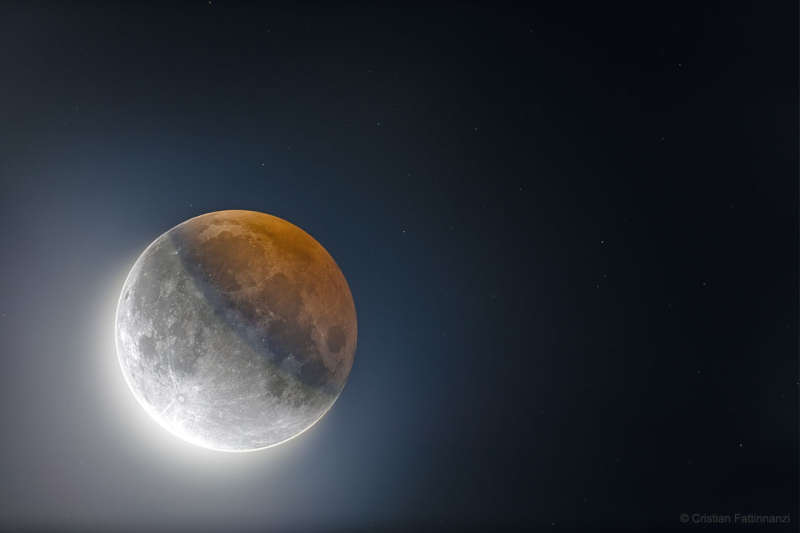Credit & Copyright: Cristian Fattinnanzi
Explanation:
What could create such a large circular shadow on the Moon?
The Earth.
Last week's full Moon -- the
Buck Moon -- was so full that it fell almost exactly
in
a line with the
Sun and the
Earth.
When that happens the Earth casts its
shadow onto the Moon.
The circularity of the Earth's shadow on the Moon was commented on by
Aristotle and so has
been noticed since at least the
4th century BC.
What's new is humanity's ability to record
this shadow with such
high dynamic range (HDR).
The featured HDR composite of last week's partial
lunar eclipse
combines 15 images and include an exposure as short as 1/400th of a second --
so as not to overexpose the brightest part --
and an exposure that lasted five seconds --
to bring up the dimmest part.
This dimmest part -- inside
Earth's umbra -- is
not
completely dark
because some
light
is refracted through the
Earth's atmosphere
onto the Moon.
A total lunar eclipse will
occur next in 2021 May.
Partial Lunar Eclipse in 2019 July:
Some memorable images submitted to APOD
1999 2000 2001 2002 2003 2004 2005 2006 2007 2008 2009 2010 2011 2012 2013 2014 2015 2016 2017 2018 2019 2020 2021 2022 2023 2024 2025 |
Yanvar' Fevral' Mart Aprel' Mai Iyun' Iyul' Avgust Sentyabr' Oktyabr' Noyabr' Dekabr' |
NASA Web Site Statements, Warnings, and Disclaimers
NASA Official: Jay Norris. Specific rights apply.
A service of: LHEA at NASA / GSFC
& Michigan Tech. U.
|
Publikacii s klyuchevymi slovami:
lunar eclipse - lunnoe zatmenie
Publikacii so slovami: lunar eclipse - lunnoe zatmenie | |
Sm. takzhe:
Vse publikacii na tu zhe temu >> | |
